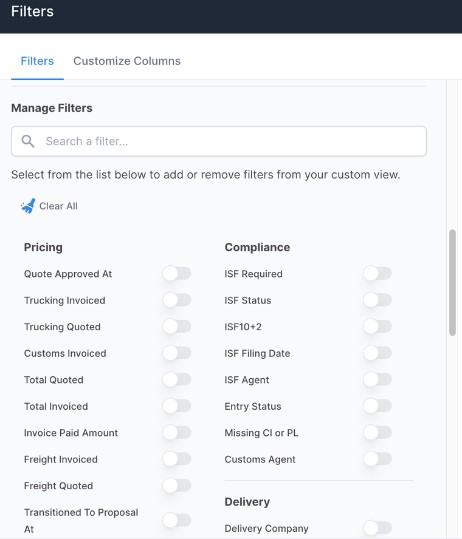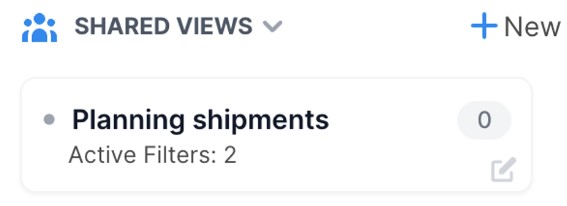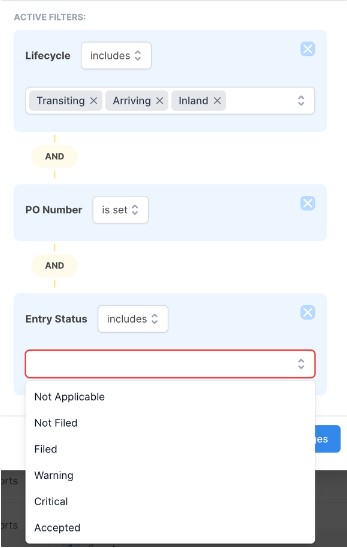Customs Entry Status
Table of Contents
To ensure that your containers move efficiently, it's crucial to stay updated on the customs entry statuses. Instead of the time-consuming task of checking shipments individually, we suggest using a Custom View for a more streamlined approach. Creating this shipment view is easy, and implementing it is an effective method to keep both your team and partner network well-informed.
A Quick Refresher
If you need a to revisit what a Custom View is and how to build one, check out our guide on How to Create a Shipment View.
If you're ready to proceed with building out a view that shows Customs Entry Statuses, please keep reading!
Entry Status Creation
To create your new view, first navigate to your list of shipments by clicking Shipments in the top global navigation bar after logging in.
Once you are on your shipments page, you can see all the data points available to create a new shipment view when you click on the Filters button.
Doing so will bring up a menu of over 85 different data points you can apply to your shipment list.

You can also arrive here by pressing on the New button in your Shared views panel.

We recommend selecting the following filters:
- Lifecycle
- Client Reference
- PO Number
- Consignee
- Shipper
- Entry Status
- Container Count
- Container Numbers
- Container Size
This list of criteria will give you and your team all the pertinent data necessary to plan your next steps either before or after the customs process.
When navigating the criteria menu, try using the search bar to find what you're looking for faster.

Saving and Modifying Your View
Once you've selected all the criteria you'd like to use, click on Apply Changes.
From there, press Save this View.
Once a view is created, you can modify it to either highlight new shipment info or to create brand new view. For instance, with entry status you can filter it to only show shipments where customs has not been submitted - or by any other criteria you'd like.
Once you've made your updates, simply select Save View or Create View depending on what it is you'd like to do.

Conclusion
Custom views are important tools every importer should utilize. These views allow users to access shipment information quickly and streamline the planning and communication process with their teams and partners. The end result is more clarity across your supply chain network, and having timely data to optimize your logistics planning.